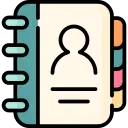PLEASE MATCH YOUR ASSIGNMENT QUESTIONS ACCORDING TO YOUR SESSION
IGNOU CTE-103 (July 2024 – January 2025) Assignment Questions
1. Discuss how different methods have impacted language teaching learning in the 20th and 21st century and critically analyze the advantages and disadvantages of each method.
2. The process of learning was essentially of forming associations, i.e. speech associated with appropriate objects, actions, concepts—do you agree with the statement? Justify your answer logically.
3. Explain the main features of language learning through the structural approach.
4. Write any two main features of the Audio Lingual method of language teaching.
5. How is ‘linguistic competence’ different from ‘communicative competence’? Explain with examples.
6. Describe the salient features of the Humanistic approach to language teaching.
7. What does ICT mean? What are the implications of ICT for education and especially for teaching of English?
8. The Government of India has announced 2010-2020 as the decade of ICT and innovation. What do you understand by the term ‘innovation’?
9. Critically examine the terms Authenticity, Practicality, Reliability, Validity and Washback vis-a-vis the History of Language Tests and Assessments.
IGNOU CTE-103 (July 2023 – January 2024) Assignment Questions
1. Write short note on the following.
(i) Pair work and Group work
(ii) Dealing with undisciplined students in an English class.
(iii) Role of the teacher in a communicative class.
(iv) Extensive listening and intensive listening.
2. What is Practitioner Research and how is it conducted in English language classrooms.
3. Discuss the utility of literature contents in English language teaching. Answer your question in Indian context.
4. What are the ICT tools w h i c h c a n b e u s e d in modern classrooms in present scenario?
5. What kind of speaking activity can be generated from the discussion, debate, panel discussion, role playing or any other?
6. What are the alternatives of conventional assessment system and how can they be effectively used in our classrooms?
7. What is listening and how is it different from hearing? Also suggest practical approaches to improve the listening skills of English language learners.










